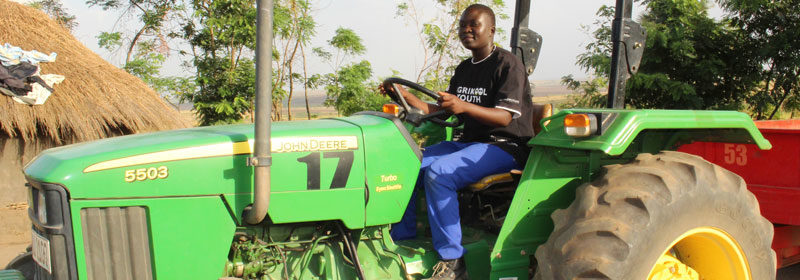Industrial Agricultural expansions in Nwoya district threatens Pangolins and their habitats

The world is experiencing what has been referred to as the Anthropocene a time characterized by a loss of biodiversity and species unprecedented in the last 65 million years. Human population growth, shifting social and commercial patterns and economic inequality underpin unsustainable consumption of the world’s natural resources and contribute to conflict, water, and food scarcity, soil infertility, pollution, climate change, and damage to ecosystems.
In May 2019 a groundbreaking report from the United Nations’ Intergovernmental Platform on Biodiversity and Ecosystem Services warned that 1 million animal and plant species face extinction in the next few decades due to the threats of habitat loss, climate change, and other human activities. While past mass extinction events were caused by asteroids, global volcanic eruption events, and other geological cataclysms, this mass-extinction event is entirely due to human civilization, according to the report.
In Uganda, among most threats of this Biodiversity and Ecosystem are the Pangolins species and the habitat. As commercial agriculture continues to encroach on natural habitats key for the survival of Pangolins and other species, combined with the expansion of infrastructure as well as a growing human population, this is threatening the survival of Pangolins and the Ecosystems that they inhabit.
Of the eight species of pangolin (four natives to Asia and four to Africa), all are now threatened with extinction due to overexploitation, despite the existence of an international commercial trade ban. Hunted both for their meat and their scales, which are used in traditional Chinese medicine, the demand for these small mammals has proved devastating.
Uganda is home to all the four species of Pangolins found in Africa ( Temminck’s Ground Pangolin Manis temminckii, the African White-bellied Pangolin Manis tricuspis, the Black-bellied Pangolin Manis tetradactyla and the Giant Pangolin Manis gigantea.
Most of these Pangolins are found in the areas near Murchison Falls National Park specifically in Purongo, Got Apwoyo, Wadelai, Alwi, Panyigoro, and Ragem in Pakwach district. Both Purongo and Got Apwoyo villages are found in Nwoya district. An area said to have one of the most fertile soils. This has attracted more than 26 commercial foreign and domestic Agribusiness investors, growing mainly cereals and grains sold on the world market and to the World Food Programme. Most of the farms are heavily mechanized thus having negative impacts on Pangolins habitats and biodiversity of the Murchison Falls National Park landscape and the neighboring areas.
Industrial Agriculture in the Pangolins range has both direct and indirect impacts. Trees are inevitably destroyed as land is prepared and converted for agricultural use, a process that leads to deforestation thus deriving Pangolins of their homes, food as well as the ability for Pangolins to breed.
Similarly, the illegal hunting, killing, and removal of Pangolins from their natural habitats increase as people respond to what they see as “pests,” seek out wild meat, or engage in the illegal pet trade. Habitat destruction due to agricultural activities has reduced Pangolins and their habitat, making them even more vulnerable to poaching.
The IUCN Red List assessments for pangolins were updated in December 2019, resulting in the species being categorized as Critically Endangered, Endangered or Vulnerable, based on past, ongoing and future population declines attributed to actual or potential levels of exploitation. Therefore, it is no doubt that all species of Pangolins are at risk of extinction as a result of habitat loss and illegal trade.
Increasing Commercial Agriculture in Nwoya and Pakwach district near Murchison Falls National Park is the major cause of Pangolin habitat loss and degradation. This places additional pressure on pangolin populations.
Although it has been suggested that pangolins can adapt to modified and artificial habitats, and there is some evidence for this, for example, the Sunda pangolin in Singapore, but further research is needed to determine the extent to which this is the case, how it differs between species, and how it affects reproduction.
Because most of the Industrial Agricultural farms in Nwoya are highly mechanized, they tend to fence their farms with electric fences causing additional danger to Pangolins. For example, in Purongo and Got Apwoyo, electrocution on electric fences poses a big threat to pangolins. With dozens of Pangolins being chocked by electricity.
Severe use of pesticides in Maize, rice, and sugar plantations in Nwoya is an additional threat to Pangolins and their habitats. This is because pesticide use is found to be reducing the populations of ants and termites, diminishing sources of prey which are food for Pangolins. Other threat includes Killing by tractors, lorries among others which transport farm inputs.
In 2016, pangolins were finally given the highest level of protection under the Convention on International Trade in Endangered Species (or CITES), moving from Appendix II to Appendix I. On January 2, 2017, the listing went into effect, banning the commercial trade of all eight-pangolin species and their parts.
But implementation is another story. Currently, just 17 pangolin range states have enacted legislation that meets CITES requirements; 31 states have not. Increased law enforcement is required at all points of the illegal trade to help save the pangolin. Furthermore, governments must disrupt the demand by dispelling the myth that pangolin scales contain healing properties.
In Africa Some countries have declared Pangolin a protected species, like hunting, capturing, killing, or trading them domestically is illegal. In others, capturing is permitted for scientific purposes or with a special permit. Where protective legislation is in place, it is not always enforced effectively and, given the current scale of commercial trafficking of pangolins and parts out of Africa, the deterrents are insufficient to curb what has become an international trade.
In order to protect Pangolins and their habitats in Uganda, we are implementing activities to raise awareness and reduce demand for Pangolins and their products through sensitizing local communities using film and videos about the plights of Pangolins and the need to conserve Pangolins as well as the legal implication of engaging in poaching activities. We are also helping to establish Pangolins reserve outside government-protected areas to halt poaching and trafficking of Pangolins from the wild. We also engage in sustainable livelihoods as alternatives to bushmeat and poaching. In addition, through our Technology for Biodiversity Conservations program, we are pioneering the use of Wild Life/Park Guardians to halt poaching and logging in the Pangolins range.
Thus, very soon we shall be directly supporting Uganda Wildlife Authority and local rangers as well as on-ground Environmental Defenders to deploy mobile Wildlife and environment defense and increase community involvement in anti-poaching, logging as well as guiding operations to support an over-stretched Uganda Wildlife Authority (UWA) using the application of the Guardian.

